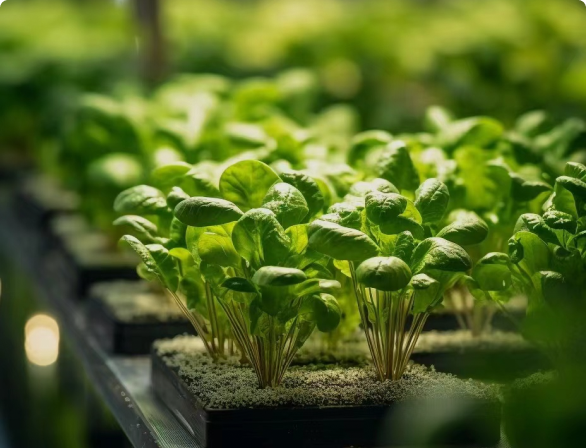In the realm of indoor gardening, providing adequate light for plants can be challenging. Natural sunlight may not always be accessible, especially in indoor environments with limited exposure to the outdoors. This is where plant lights come into play. In this article, we'll explore the world of plant lights, uncovering their functions, benefits, and how to choose the right one for your indoor garden.
Understanding Plant Lights: Plant lights, also known as grow lights or plant lamps, are artificial light sources designed to stimulate plant growth by emitting specific wavelengths of light necessary for photosynthesis. These lights serve as a supplement or replacement for natural sunlight, ensuring that indoor plants receive the light energy they need to thrive.
Types of Plant Lights: There are several types of plant lights available on the market, each with its own unique spectrum and intensity. The most common types include fluorescent, high-intensity discharge (HID), and light-emitting diode (LED) lights. Among these, LED lights are widely preferred for their energy efficiency, long lifespan, and ability to emit customizable light spectra tailored to different stages of plant growth.
Benefits of Plant Lights:
- Enhanced Growth: Plant lights promote vigorous growth and flowering by providing plants with the necessary light energy for photosynthesis, even in environments with limited natural light.
- Year-Round Cultivation: With plant lights, indoor gardeners can cultivate plants year-round, regardless of external factors such as weather or seasonal changes.
- Energy Efficiency: LED plant lights consume less energy than traditional lighting systems, making them a cost-effective and environmentally friendly option for indoor gardening.
- Customizable Spectra: Advanced plant lights offer adjustable light spectra, allowing users to tailor the lighting conditions to meet the specific needs of different plant species and growth stages.
Choosing the Right Plant Light: When selecting a plant light for your indoor garden, consider the following factors:
- Light Spectrum: Choose a light with a spectrum optimized for plant growth, including wavelengths of blue, red, and sometimes white light.
- Light Intensity: Ensure that the light provides sufficient intensity to reach all parts of your plants, especially those in lower foliage.
- Energy Efficiency: Opt for energy-efficient LED lights with a high photosynthetic photon flux density (PPFD) to maximize plant growth while minimizing energy consumption.
- Coverage Area: Select a light with an appropriate coverage area that matches the size of your indoor garden or growing space.
Conclusion: Plant lights are indispensable tools for indoor gardeners seeking to create thriving indoor green spaces. By understanding their functions, benefits, and key considerations, you can choose the right plant light to illuminate your indoor garden and nurture healthy, vibrant plants year-round. Whether you're a novice gardener or a seasoned plant enthusiast, integrating plant lights into your indoor gardening setup opens up a world of possibilities for cultivating a lush and flourishing oasis within the comforts of your home.





